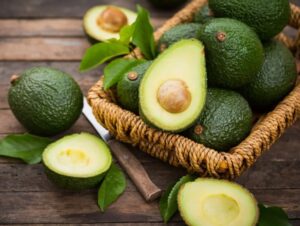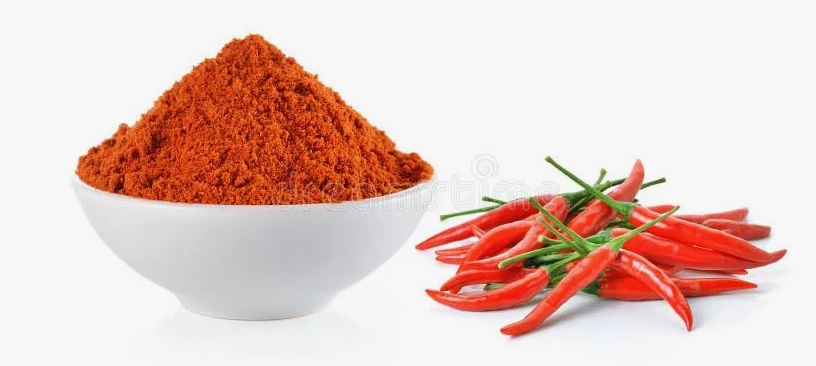The Mighty Avocado: A Journey from Tree to Table and Beyond
The avocado, often mistakenly called a vegetable, is actually a fruit – a single-seeded berry, to be precise. Known for its creamy texture, rich flavor, and impressive nutritional profile, this versatile gem has become a staple in kitchens and health regimens worldwide. But where did this powerhouse of goodness come from, and how can we make the most of it? Let’s dive in.
Where Does the Avocado Thrive?
The avocado tree (Persea americana) is native to the tropical and subtropical regions of Central Mexico. Its cultivation has spread rapidly, and today, you’ll find avocado orchards flourishing in various warm climates, including:
Mexico: The world’s leading producer of avocados.
California (USA): A major domestic producer, known for its Hass variety.
South America: Countries like Peru, Chile, and Colombia contribute significantly to global production.
Africa: Kenya, South Africa, and others are growing avocado production.
Other areas: Some parts of the Mediterranean, Southeast Asia, and even New Zealand are also suitable for avocado cultivation.
These regions provide the ideal conditions of warm temperatures, adequate rainfall, and well-drained soil necessary for avocado trees to bear their luscious fruit.
The Nutritional Powerhouse: Benefits of the Avocado
Beyond its delicious taste, the avocado packs a nutritional punch, offering a wide array of benefits:
Healthy Fats: Avocados are rich in monounsaturated fats, the “good” kind that can help lower bad cholesterol and improve heart health.
Fiber: A good source of both soluble and insoluble fiber, avocados aid digestion, promote gut health, and can help you feel fuller for longer.
Vitamins and Minerals: Avocados are brimming with essential nutrients including Vitamin K, Vitamin C, Vitamin E, several B vitamins (like Folate), Potassium, and Magnesium.
Antioxidants: They contain powerful antioxidants like lutein and zeaxanthin, beneficial for eye health.
Nutrient Absorption: The healthy fats in avocados can also help your body absorb fat-soluble vitamins from other foods.
More Than Just Guacamole: Versatile Uses of the Avocado
The avocado’s creamy texture and mild flavor make it incredibly versatile in the kitchen. Here are just a few ways to incorporate it into your diet:
Guacamole: The classic dip, perfect with tortilla chips or as a topping for various dishes.
Salads: Adds a creamy element and healthy fats to your favorite salads.
Toast: Mashed avocado on toast, often with a sprinkle of sea salt, is a popular breakfast or snack.
Smoothies: Blended avocado adds richness and creaminess to smoothies.
Sandwiches and Wraps: A great alternative to mayonnaise or other spreads.
Direct Consumption: Cut in half, sprinkle with salt and pepper, and enjoy straight from the shell.
Baking: The creamy texture can be used to replace butter in some baking recipes.
Beyond Food: Avocado oil is used in skincare and haircare products for its moisturizing properties.
Potential Health Cures and Support:
While avocados aren’t a “cure-all,” their nutritional profile lends itself to supporting various aspects of health:
Heart Health: The monounsaturated fats and potassium help lower cholesterol and blood pressure, reducing the risk of heart disease.
Weight Management: The fiber and healthy fats promote satiety, which can help control appetite and support weight management.
Eye Health: Lutein and zeaxanthin contribute to healthy vision and may reduce the risk of age-related macular degeneration.
Digestive Health: Fiber aids in healthy digestion and prevents constipation.
Bone Health: Vitamin K is crucial for bone health.
Anti-Inflammatory Effects: The healthy fats and antioxidants may help to reduce inflammation in the body.
Important Note: While avocados offer numerous benefits, they are also calorie-dense. Portion control is essential when incorporating them into your diet.
The Avocado’s Journey Continues
From its ancient roots in Mexico to its present-day popularity worldwide, the avocado’s journey is a testament to its remarkable qualities. Its delicious flavor, nutritional powerhouse status, and versatile nature make it a true gift from nature. So, next time you enjoy that creamy, rich bite of avocado, take a moment to appreciate all this wonderful fruit has to offer. The Mighty Avocado: A Journey from Tree to Table and Beyond
The avocado, often mistakenly called a vegetable, is actually a fruit – a single-seeded berry, to be precise. Known for its creamy texture, rich flavor, and impressive nutritional profile, this versatile gem has become a staple in kitchens and health regimens worldwide. But where did this powerhouse of goodness come from, and how can we make the most of it? Let’s dive in.
Beyond Guacamole: Unlock Avocado’s Versatility for Delicious and Healthy Meals

Avocado. That creamy, green fruit that’s become a health food staple. But avocado isn’t just for toast and guacamole anymore. Its mild, buttery flavor and smooth texture lend itself to a surprising range of dishes, offering a boost of nutrition and deliciousness that you might not have considered. So, let’s dive into the practical dishes you can create with avocados, where they shine, their health benefits, and even how they might help when you’re feeling under the weather.
Avocado’s Culinary Canvas: Dishes Where It Truly Shines
Avocado’s versatility makes it a welcome addition to meals across the board. Here are a few practical dishes where it can elevate your culinary game:
Breakfast and Brunch:
Avocado Toast, Reimagined: Move beyond basic avocado on toast. Add everything bagel seasoning, a fried egg, crumbled feta, chili flakes, or a drizzle of balsamic glaze for a personalized and satisfying breakfast.
Smoothie Booster: Blend half an avocado into your morning smoothie for a creamy texture and added healthy fats. It blends seamlessly and doesn’t dramatically alter the flavor.
Avocado and Egg Scramble: Dice avocado into your scrambled eggs for a richer, creamier breakfast.
Lunch and Snacks:
Avocado Chicken or Tuna Salad: Replace some or all of the mayonnaise in your chicken or tuna salad with mashed avocado for a healthier and more flavorful twist.
Stuffed Avocados: Halve avocados and fill them with anything from seasoned shrimp and salsa to quinoa salad for a quick and satisfying lunch.
Wraps and Sandwiches: Spread mashed avocado on wraps or sandwiches instead of mayonnaise for a healthier, tastier alternative. Think turkey and avocado, black bean and avocado, or even just a simple avocado and tomato sandwich.
Dinner Delights:
Avocado Pasta Sauce: Blend avocado with basil, garlic, lemon juice, and olive oil for a creamy and surprisingly delicious pasta sauce.
Grilled Avocado: Halve and grill avocado for a smoky, warm treat. Top with a sprinkle of sea salt and a squeeze of lime.
Avocado Crema: Blend avocado with sour cream (or Greek yogurt), lime juice, and cilantro for a creamy topping for tacos, burritos, or grilled meats.
Salads: Avocado adds a creamy richness to any salad. Pair it with citrus, grilled chicken, or roasted vegetables for a complete and fulfilling meal.
Health Benefits: A Powerhouse of Nutrition
Beyond its delicious flavor, avocado is packed with a wealth of health benefits:
Healthy Fats: Avocados are rich in monounsaturated fats, which can help lower LDL cholesterol (the “bad” cholesterol) and raise HDL cholesterol (the “good” cholesterol).
Nutrient Dense: They’re an excellent source of potassium, folate, vitamin K, vitamin C, and various B vitamins.
Fiber Rich: Avocados are a good source of dietary fiber, which promotes healthy digestion, helps regulate blood sugar levels, and can contribute to feelings of fullness.
Antioxidants: Avocado contains antioxidants. These are lutein and zeaxanthin antioxidants. They are beneficial for eye health.
Avocado: A Soothing Addition When You’re Under the Weather?
While avocado isn’t a cure for the common cold or flu, its nutritional profile can certainly provide support when you’re feeling unwell.
Easy to Digest: When your appetite is low and your stomach is sensitive, avocado’s creamy texture and mild flavor make it an easily digestible food.
Nutrient Boost: The vitamins and minerals in avocado can help support your immune system. Vitamin C has been proven to strengthen the immune system.
Hydration: While not a primary source, avocado does contribute to your overall hydration.
Electrolyte Replenishment: The potassium in avocado can help replenish electrolytes lost through sweating or vomiting if you’re dealing with the flu.
Important Note: When you’re sick, the focus should be on staying hydrated, getting plenty of rest, and following your doctor’s advice. Avocado can be a part of your recovery plan, providing gentle nourishment and supporting your body’s natural healing process.
Conclusion:
Avocado is a gift to the culinary world. Its versatility, flavor, and health benefits make it a valuable addition to any diet. So, explore beyond the traditional guacamole and discover the many delicious and practical dishes where this creamy fruit can shine. From breakfast to dinner, and even during those times when you need a little extra support, avocado is a nutritious and enjoyable way to nourish your body.
You can read below writings
what is green tea and where does it grow
Guide to Black Tea: Origins, Benefits, Uses
Nature’s Calming and Healing Wonder Linden
Exploring Hawthorn: Nature’s Healer and Its Many Benefits
Flax Seed: A Superfood for Health and Wellness
The Humble Onion: A Culinary Staple with Remarkable Benefits






